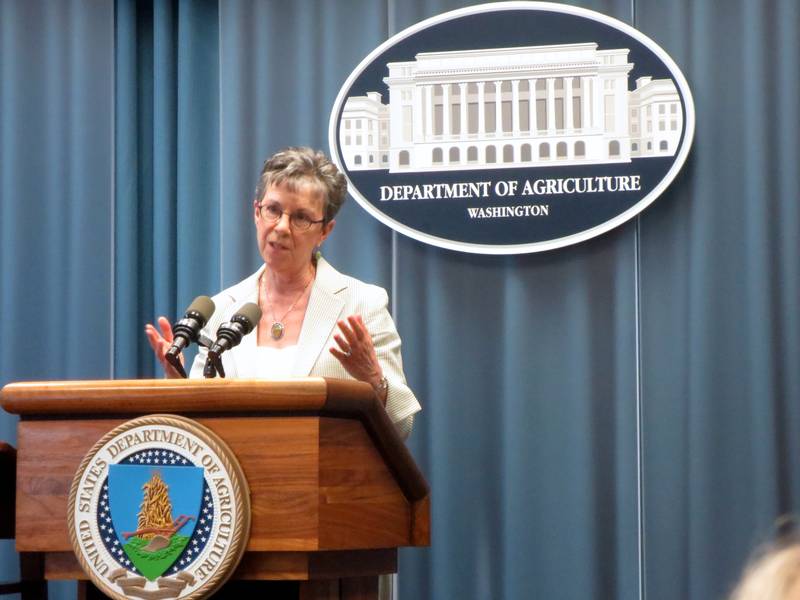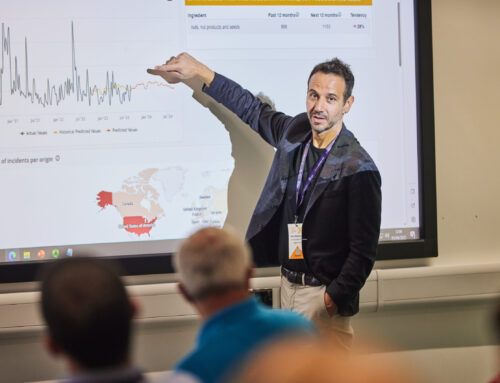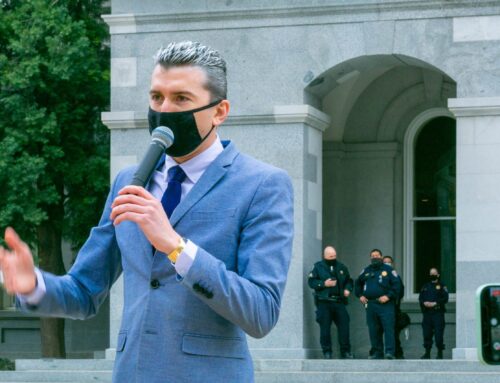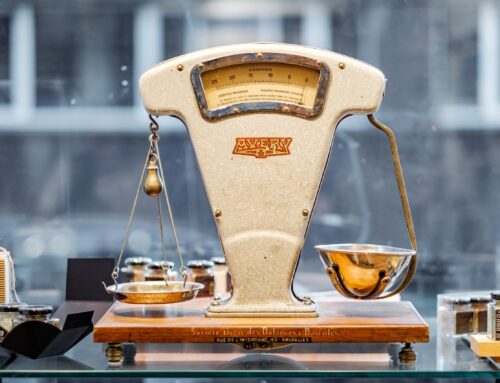
In July 2014, I visited Washington DC for a Global Food Safety Partnership (GFSP) meeting at the World Bank headquarters. I could spend a whole week at the United States so I took the opportunity in order to organise some further meetings in order to explore synergies and collaborations in the context of our SemaGrow project activities. I was trying to understand better the data problems and needs that organisations like the National Agricultural Library (NAL) and the International Food Policy Research Institute (IFPRI) have, when they are trying to put together large amounts of heterogeneous information in order to help their researchers do their job. During my visit, I had the opportunity to meet several interesting people, from various organisations and at various posts; but I have to admit that the meeting that inspired and fascinated me most was with Dr. Cathy Woteki, Under Secretary for the United States Department of Agriculture‘s (USDA) Research, Education, and Economics (REE) mission area, as well as the Department’s Chief Scientist.
Dr. Woteki is an important person: from what I understand, she is responsible for all agricultural research and education that takes place under the umbrella and with funding from USDA. She is supervising the implementation of the open data policy that the Obama administration put in place for all USDA agencies and programmes. Her team is very active in the organisation and promotion of the Global Open Data for Agriculture and Nutrition (GODAN) initiative, and this is where our paths have crossed. Her CV is impressive and this is why I felt very surprised but also honoured when she invited me to a meeting at the USDA headquarters in DC.
I have to be honest: I don’t trust much people in high political positions. I was expecting one of those meetings where a team of experts with arrogance and attitude are monopolising the discussion, while the important person in the room is only physically present there, doing other things like replying to e-mails and taking urgent and important calls. No, the meeting with Dr. Woteki was not at all like this.
On the contrary, after I got into the beautiful Whitten building of USDA and was taken to the office of Dr. Woteki (yes, one of this large, impressive wooden offices with governmental photos and mottos everywhere), I found myself sitting in a room with someone being welcoming and eager to find out the things that we are doing. The detail that grabbed my attention: that she sat across the table with a pen and an open notebook (the paperback device, you know) being ready to write down anything interesting that she may hear.
And I think that we talked about many very interesting things. I would not like to disclose what we talked about in such a private meeting, but there are some things that I learned through the discussion which I would like to share with you:
a) Is opening up governmental data that easy?
Well, adopting an open data policy and mandate for governmental agencies is a required (although time consuming and often daunting) step. Publishing some data in the format that they are currently being collected, processed and published is doable. Setting up an “open data portal” is not that hard. But things like discovering important information that is currently hiding in the computer or the drawers of some office, and setting up a workflow and system that will create continuously updated human and machine readable streams of information – that’s no easy task. You may find several USDA datasets at the US government data portal and this is an important first win; but the challenge is to make data publishing part of the everyday way that the government works.
b) So if you open it, will they come?
One of the questions also troubling Dr. Woteki and her team. Yes, it is nice to have large amounts of important data made available to the public, but also to companies that can (try to) develop useful services on top of them. But will this happen? And if it happens, is it going to solve some important problem of people like researchers, extension officers and farmers? Or is it just a “nice to have” thing? I believe that the key here is to first focus on the problems: what do people do and where are the obstacles and pains in the way they do it? Can we go deeply on the workflows, data produced and used, and expected outcomes of their work tasks? Then we can think about better ways (and tools) to help them organise, share, process, combine, visualise or discover relevant data. To solve, eventually, a real problem. It would be very interesting to examine applications that are being developed using USDA data from this perspective, as well as study a bit the access and usage analytics of these datasets.
c) Are we are ready to adopt open data and tools and services in agri-food research and education?
This is where I have a strong point to make. As in any other high tech product that needs to go through the Technology Adoption Model cycle, I believe that an innovation like open data (both in terms of tools to help you publish it and in terms of tools that use it) needs time. I particularly like the way that G.A. Moore classifies people into different high tech adoption psychological profiles in the classic book Crossing the Chasm. And I do not see why such an approach cannot fit the way that we introduce innovation to researchers and educators in the agri-food sector. I had a copy of the book with me which I suspected that would make a nice gift for Dr. Woteki (my good manners say: never go to a visit with empty hands), and she accepted it with pleasure. I am really curious how the ideas in the book seemed to her and whether she could see an analogy between the introduction of a high tech product and of an innovation like open data – as well as any ideas about how to make this work in the public sector.
Overall, I was impressed by a warm, knowledgeable and open minded person that was both enthusiastic when talking about her work but also very much interested in finding out about new ideas. It was my pleasure to meet her and spend a whole hour discussing with her. And when I left the building I had this feeling inside that what we do has a real purpose and meaning; and that there are (quite important) people around the world that share a similar vision.




